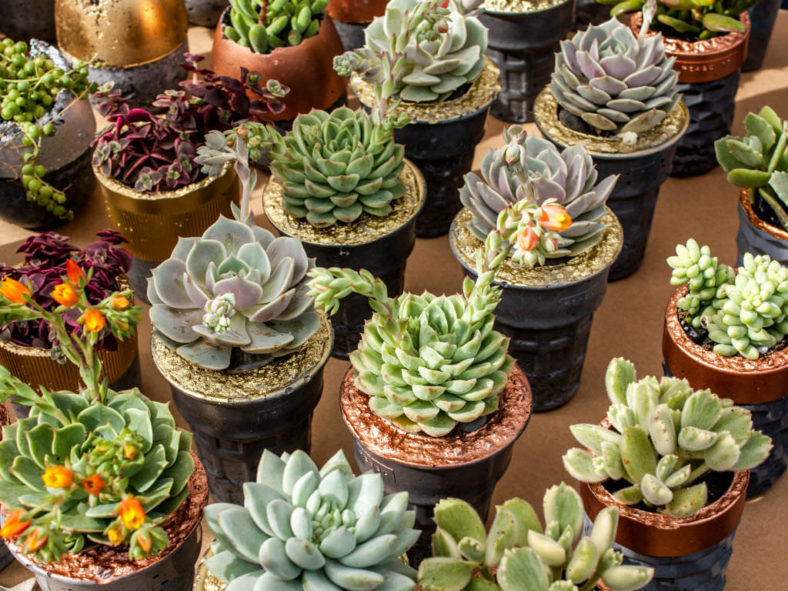Succulent plants add color and texture to the garden landscape. These plants are interesting not only in their appearance but also in the structure of their stems and leaves. Native to arid climates that experience little rainfall, succulents have thick fleshy stems and leaves capable of storing water. Therefore, water stress is one of the primary reasons succulent plants experience wilting. However, other cultural practices also cause succulent wilt.
1. Water Stress
Water stress that causes the wilting of succulents can include too much or too little water. Although succulents store water reserves in their leaves, stems, or roots and can survive periods of drought, like most plants, too little water causes the leaves of plants to wilt, drop off, and die. An under-watered succulent plant typically displays indentations in its leaves and a lackluster color before wilting. Over-watering also causes wilting in succulent plants. The leaves appear limp, shriveled, and weak when the plant receives too much water. The best way to avoid overwatering succulents is to allow the soil to dry out between waterings. Provide your succulent plant with well-draining soil, such as sand or a loamy mixture, to ensure proper drainage. When growing your plant in a container, ensure the pot has drainage holes in the bottom.

2. Temperature Stress
The ideal temperature for a succulent is between 65°F and 75°F (18°C and 24°C). In a mild Mediterranean climate, succulents are adaptable to outdoor growing, although considering container growing is a good idea. Move your containers of succulents indoors if the nighttime temperatures dip below 60°F (15°C). If a succulent plant gets too cold, the leaves begin to wilt. A deadly combination for succulent plants includes cold and wet climates.
3. Light Stress
Succulents are full-sun plants. Without proper sunlight, these plants lose their vigor and experience various health problems, from invasion by pests and diseases to a loss of color and wilting of stems and leaves. Plant your succulents in a south-facing area of your landscape—situate container-growing plants in a south-facing window. Make sure your succulent receives direct sunlight for half of the day, with partial shade during the heat of the day. If you notice your succulent is wilting due to a lack of sun, slowly increase the amount of sun the plant receives. A sudden increase in light acts as a shock and can kill your succulents.
4. Bacterial Wilt
Young succulent plants are susceptible to a bacterial pathogen that causes wilting. Also called bacterial wilt (Ralstonia solanacearum), this disease causes rotting, wilting, and collapsing of the succulent tissue of the plant. It is spread by insects that feed on the plants, such as the cucumber beetle. While there is no cure for a plant affected by bacterial wilt, preventative care is available in insecticides to keep beetles from spreading the disease among your garden plants.
Source: sfgate.com
Links
- Succupedia: Browse succulents by Scientific Name, Common Name, Genus, Family, USDA Hardiness Zone, Origin, or cacti by Genus